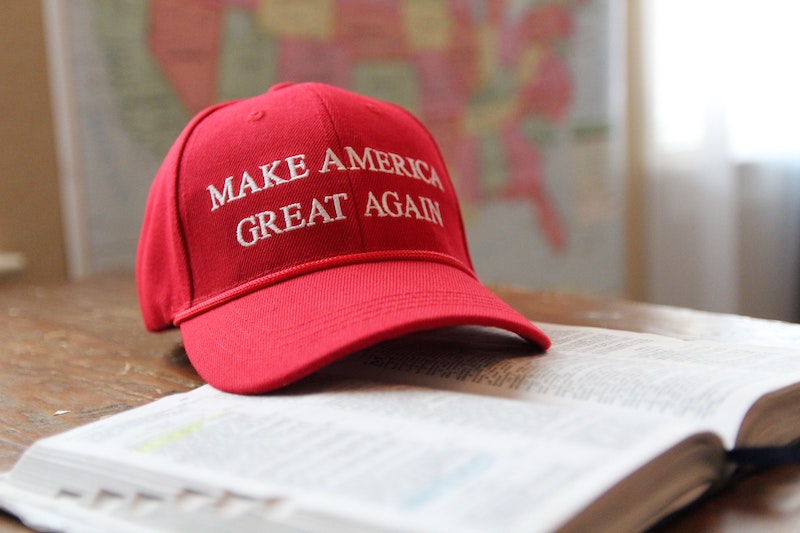While the success of Donald Trump in 2016 was a shock to many people, the movement that supported his successful campaign to the White House has been bubbling in the political periphery for some time – namely the Alt-Right. Prior to the 2016 Presidential election the term Alt-Right was only known to those who considered themselves to be a member of the movement and a small group of political ideology academics. This all changed when Donald Trump chose Steve Bannon as his campaign chief. Previous to this appointment Bannon was an executive at the online media outlet Breitbart news. Breitbart news was, and continues to be, a huge supporter of Trump’s campaign and his subsequent presidency but also more crucially was described as ‘the platform for the Alt-Right’ by Bannon himself in an interview at the Republican National Convention in 2016. This along with the posting of a Pepe the Frog meme on Donald Trump Jr’s Instagram feed, solidified President Trump’s alignment with the Alt-Right movement.

So what is the Alt-Right? If taken literally the term is simply an abbreviation of the alternative right, which is a term that can be prescribed to any right wing political thinking that exists outside of the established neoconservative ideology. In practice, however, the term Alt-Right has come to represent a political movement that can be defined by anti-establishment ethnonationalism. Simply put, it is a far right anti-establishment movement with, in the most extreme case, the hope to create an entirely white ethnic nation. Whilst these social views are not new in themselves, the online counterculture that developed through the meme and trolling culture on message board websites such as reddit and 4chan has allowed for their growth into the political mainstream. The semi-anonymity of this online world allowed for the expression of these extreme political and social views, without the consequences that would have emerged if expressed publicly. Due to this the Alt-right remains an amorphous movement, that is best understood by being broken down into a variety of cohorts: the ideological base, the online presence or ‘meme team’, the classical white supremacists or the ‘1488rs’ and the so called Alt-Lite. If you want to know about the 1448ers then look at the extensive literature on them, I will focus on the other elements.
You’d be forgiven for believing that this movement has only come into existence in the last 10 years. However, the ideological roots of the Alt-Right can be found in paleoconservatism – a fringe far-right movement that began in the 1980s. Once again, knowledge of paleoconservatism is usually confined to supporters and the halls of academia, the one exception being the 1992 and 1996 potential Republican Presidential nominee Pat Buchanan. Buchanan ran on a set of distinctively paleoconservative principles – endorsing highly social conservative principles, such as stringent immigration control and anti-abortion laws, whilst simultaneously presenting a strong anti-establishment rhetoric. It is the same technique that won Trump his nomination in 2016.

The key concept in understanding paleoconservative thought is that of the managerial revolution. The theory postulates that all capitalist economies and systems will develop to such an extent that they create a new managerial class, who will gain such an influence that they become the new ruling class. In this managerial regime all aspects of society will become homogenised to benefit the managerial elite. This concept, created by James Burnham, was greatly expanded on by the prominent paleoconservative ideologue Samuel Francis. Francis then used the managerial revolution, as a springboard to promote the overthrow of the neoliberal, and consequently neoconservative, establishment. Francis concluded that in order to successfully overthrow the establishment a proto-revolutionary group would need to be mobilised, this was to be the social group identified as the Middle American Radicals (MARs). The MARs group is generally defined as a white working class demographic, from the American industrial belts, who hold strong patriotic and anti-globalist views due to the economic downturn their communities have experienced. It is in this group that Trump gained exponential support.
Francis, who at the time was an advisor to Buchanan, predicted in 1996 that if Buchanan did not win the presidential nomination it would not be a failure but simply that the societal forces had not yet aligned for the movement. The combination of economic downturn and internet libertarianism that developed throughout the early 2000s proved to be the key. There was a feeling among young angry white men that overly liberal ideals were infringing on their rights and personal spaces, demonstrated through controversies such as GamerGate and the /r/TheRedPill subreddit. It was through this that Alt-Right intellectuals, such as the now infamous Richard Spencer, saw an opportunity to seize the disenfranchisement and anger of this demographic and give them a cause to unify behind. Leading Spencer to claim that the Alt-Right was ‘memed into existence’.
As for the particular case of Trump, his ideology was never truly clear. To the Alt movement this is unimportant. The importance was his essential controversy and utter disregard for the neoconservative establishment that has dominated western politics since WW2. So whilst Trump may have lost to Biden, and the movement has undeniably taken a hit, it would be irresponsible to assume that it will go down with Trump. The true danger is next time the leader may not be so incompetent.

Just read James dissertation, very well written, never heard of this group before interesting reading, well done James,.to
The attack by the alt-right Trump supporters on the Capitol will alienate many in the Republican party who will hopefully take steps to stop infiltration of the party by alt right groups. The American right will split, leaving the Democrats as majority party in power.
Trump knew how to work a crowd – having been in politics, that was glaringly obvious. He could say things that meant nothing practically, yet connected with people’s and which would get them cheering. I knew he was going to win when I first saw him on a stage in front of a field full of people. There never was Trumpism, he is an old school showman who got his thrills from teasing an audience.
Trump was the ideal front for the alt-right. He would bluster anything, and the ones really setting the agenda remained behind the scenes. He didn’t have an ideology that would disturb their vision of the future. And many of those are still there. But this is not a new phenomena either – agents are often more capable than candidates, but don’t want to front the politics. And when one front is gone, they will seek another.